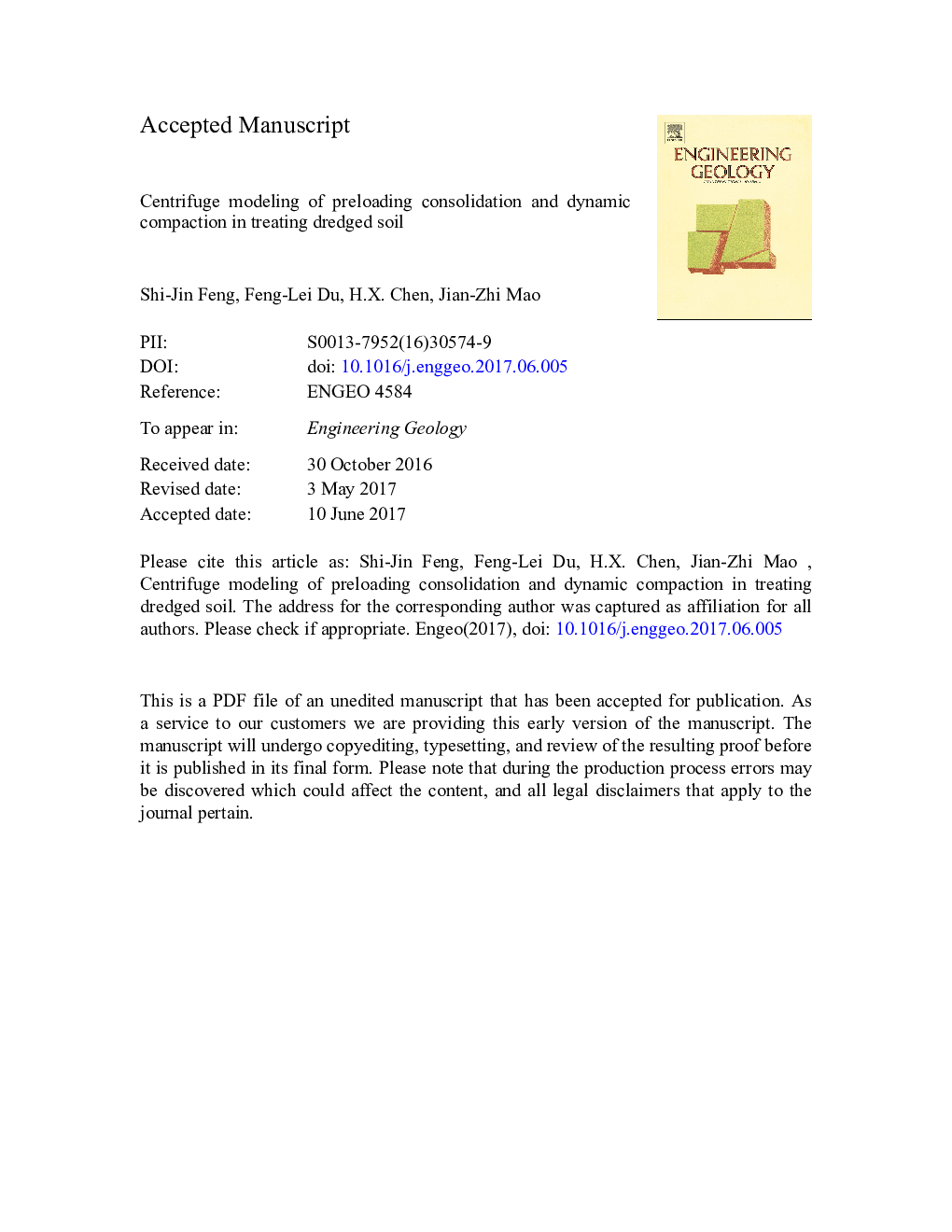| Article ID | Journal | Published Year | Pages | File Type |
|---|---|---|---|---|
| 5787480 | Engineering Geology | 2017 | 52 Pages |
Abstract
Preloading consolidation with drains (PCD) and dynamic compaction (DC) are often combined to improve the ground condition. A novel method of modeling PCD and DC in centrifuge is developed in this study. 3D printing technique is used to greatly improve the manufacturing precision and simulation ability of sand drains. A loading container, which allows adding sand in it stage by stage, is well designed to achieve uniform surface loading. Based on strong magnet and reliable mechanical principle, a novel device for modeling dynamic compaction is developed, which can realize continuous tamping in centrifuge to a certain extent. An example test using dredged soil sampled from Putian Port, Fujian Province, China, was conducted to validate the performance of the method, including self-weight consolidation, four-stage preloading with drains, and dynamic compaction. The present method performed well to simulate the whole process of pretreating the dredged soil. The surface settlement, changes in excess pore pressure and effective stress, number of drops, crater depth, improvement depth by DC were reasonably predicted. Significant surface settlement and crater depth were observed during the preloading consolidation and dynamic compaction, respectively, indicating that the compressibility of the dredged soil was rather large. Spacing of sand drains behaved to be more effective than the length. The vertical distributions of water content, excess pore pressure, and effective stress revealed that the degree of consolidation decreased with depth, since the drainage condition in the upper part was better. The present method will contribute to a better understanding of PCD and DC, and is promising to be used for the design and evaluation of the current ground improvement methods.
Related Topics
Physical Sciences and Engineering
Earth and Planetary Sciences
Geotechnical Engineering and Engineering Geology
Authors
Shi-Jin Feng, Feng-Lei Du, H.X. Chen, Jian-Zhi Mao,
